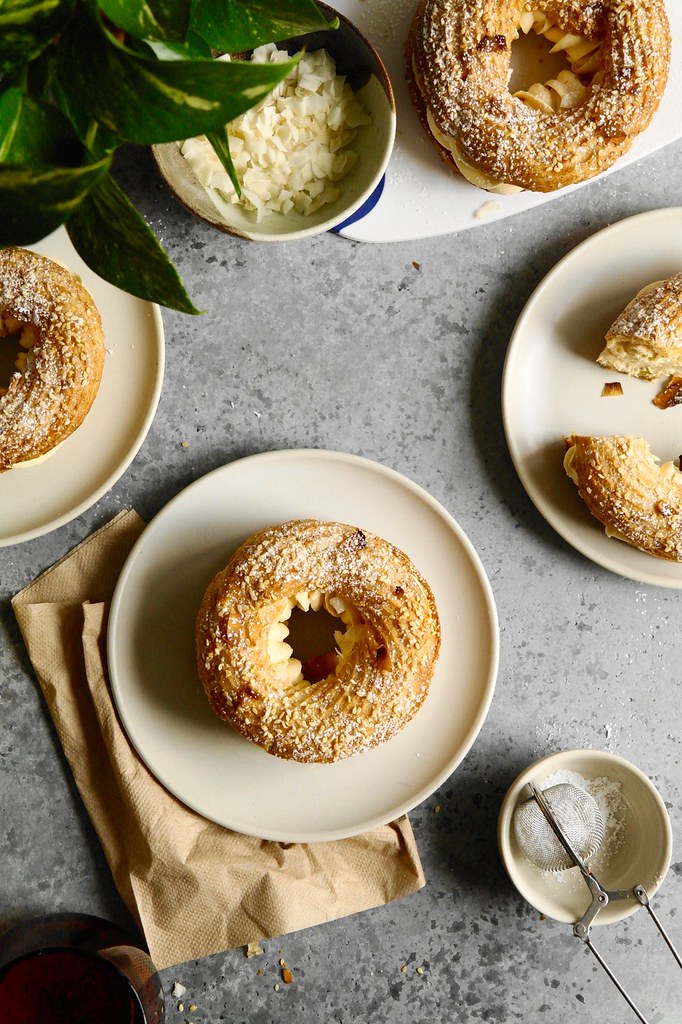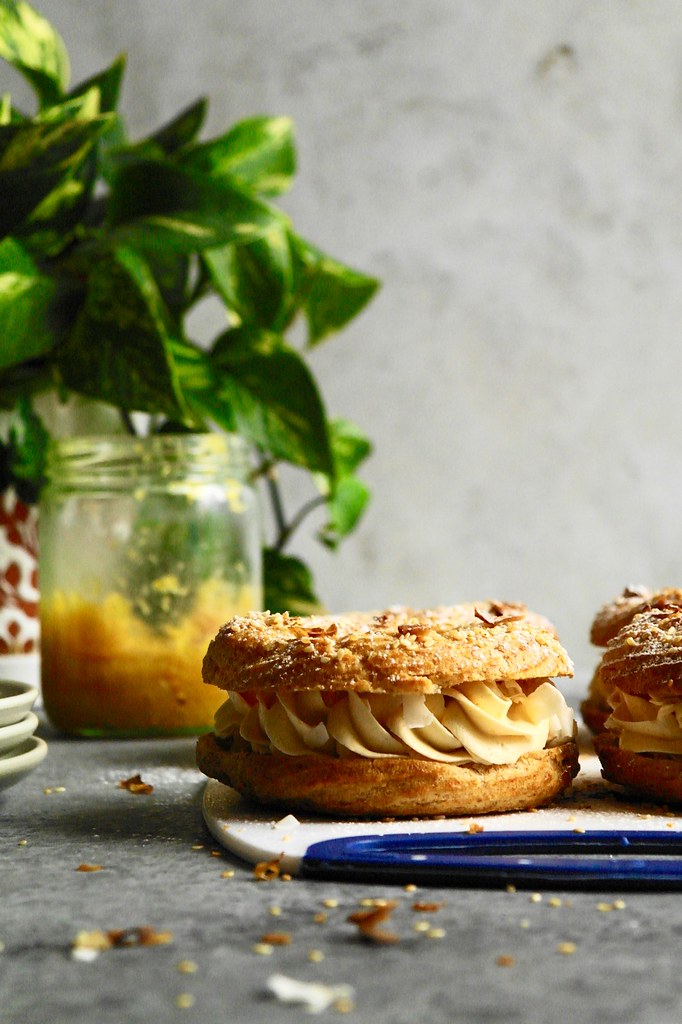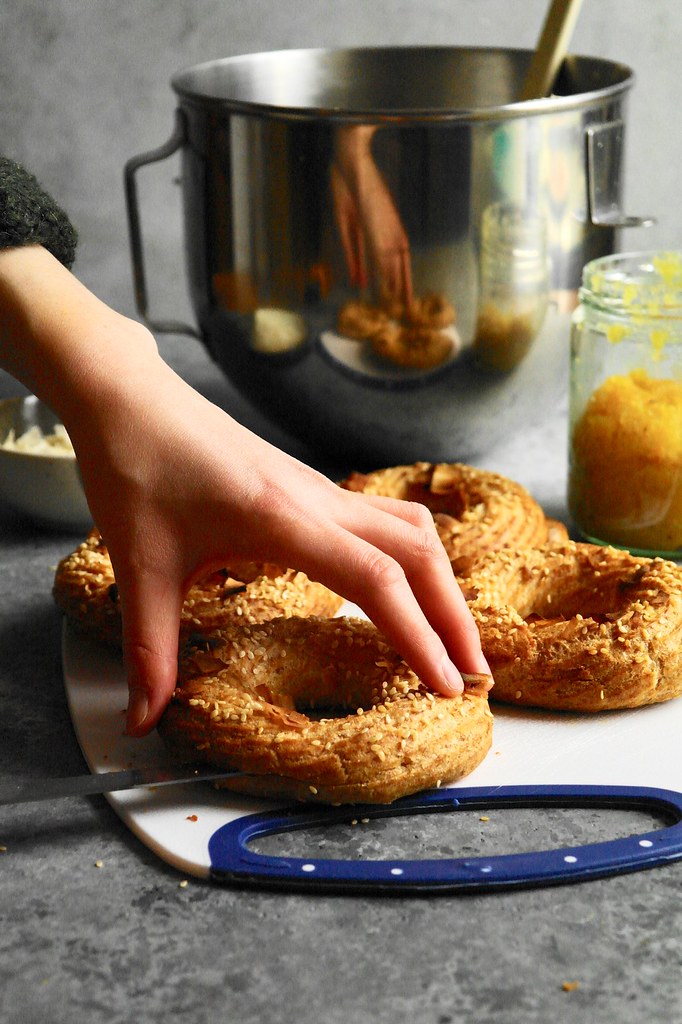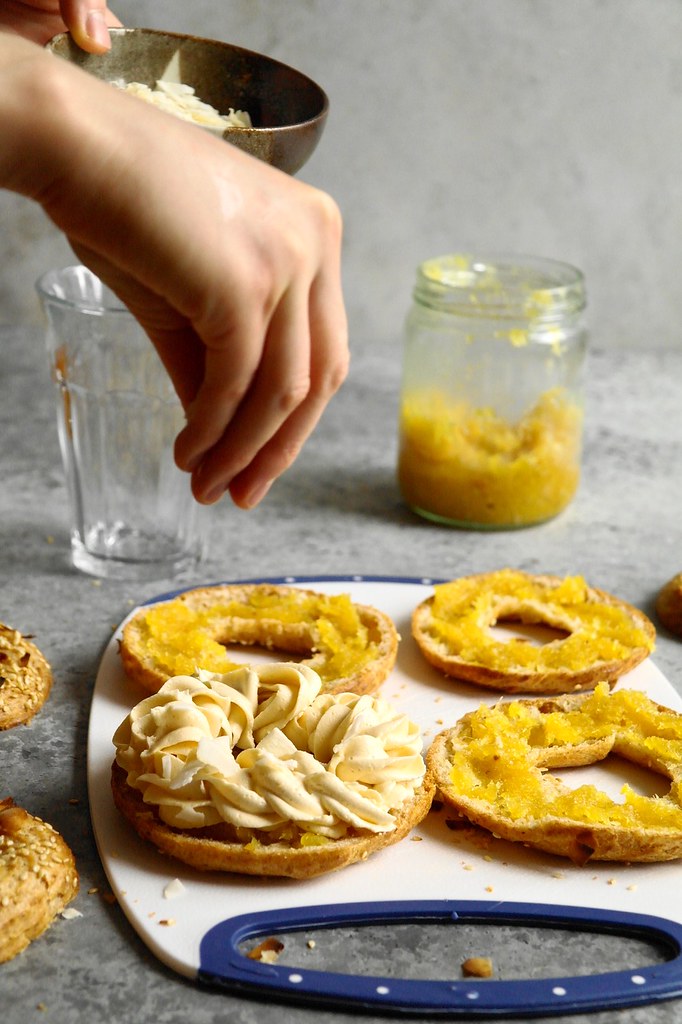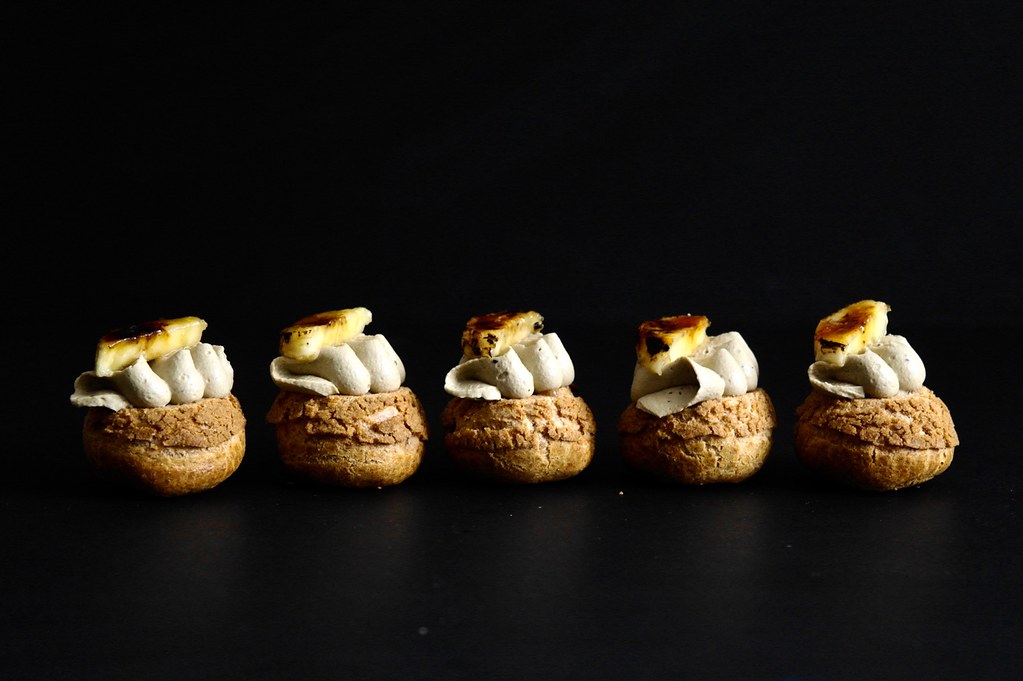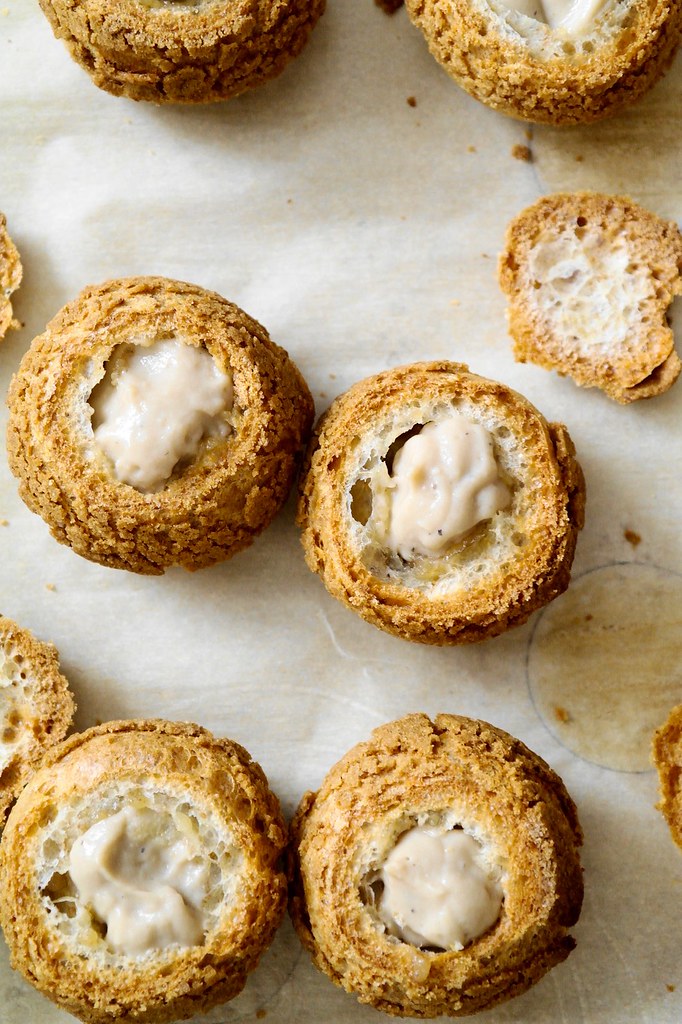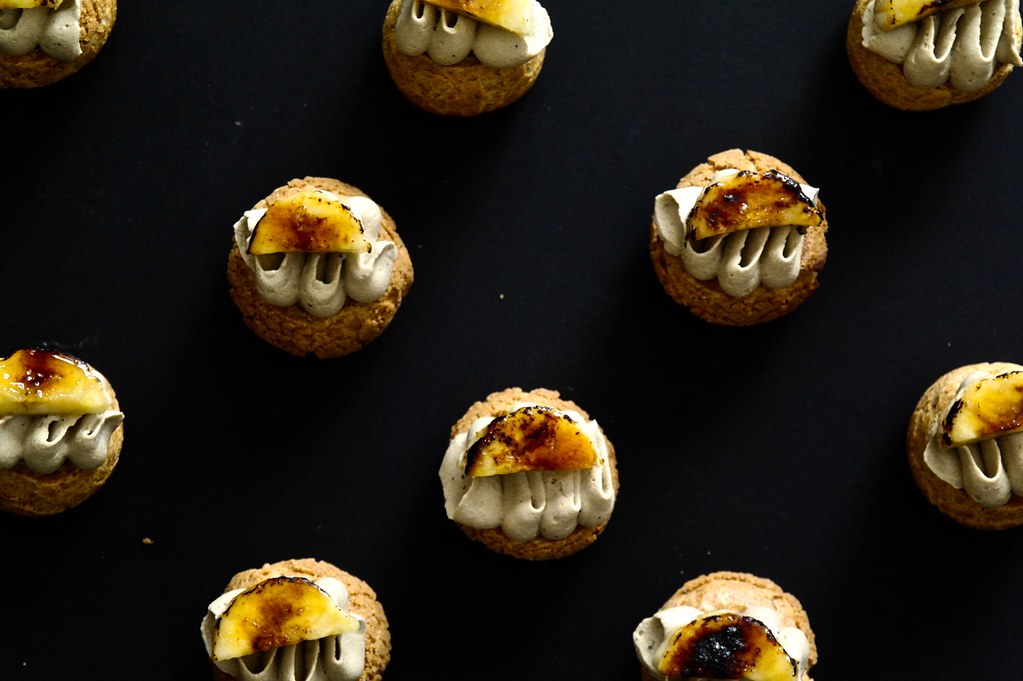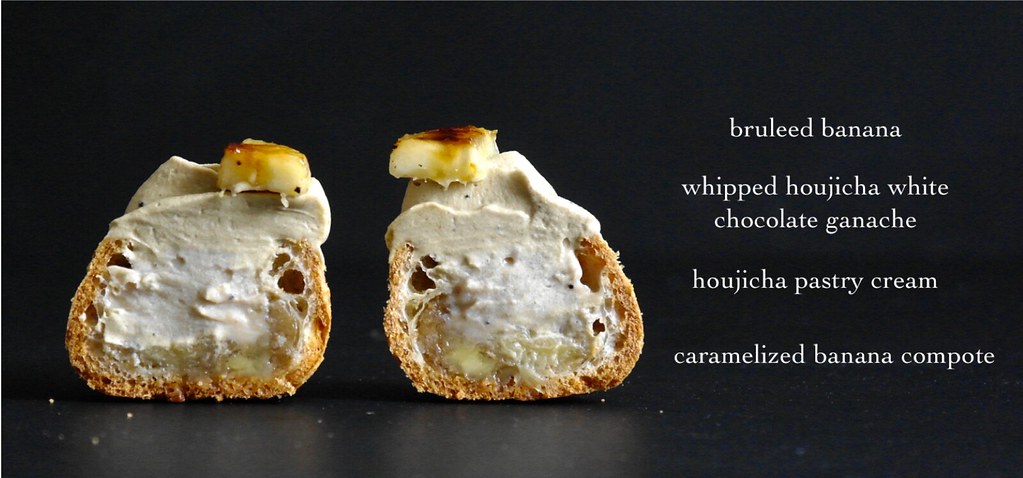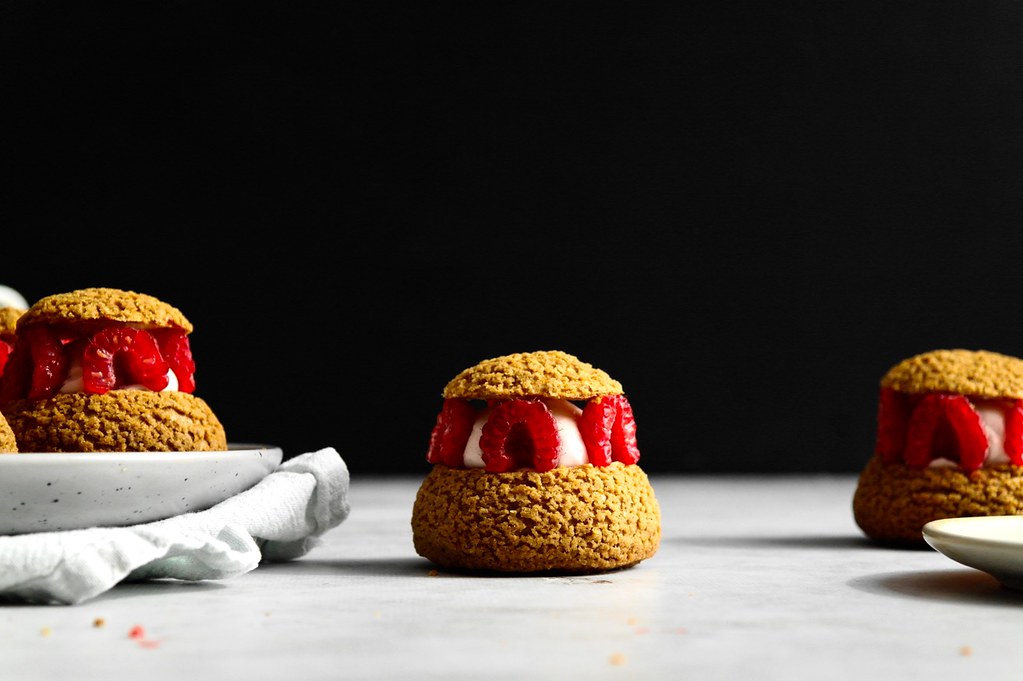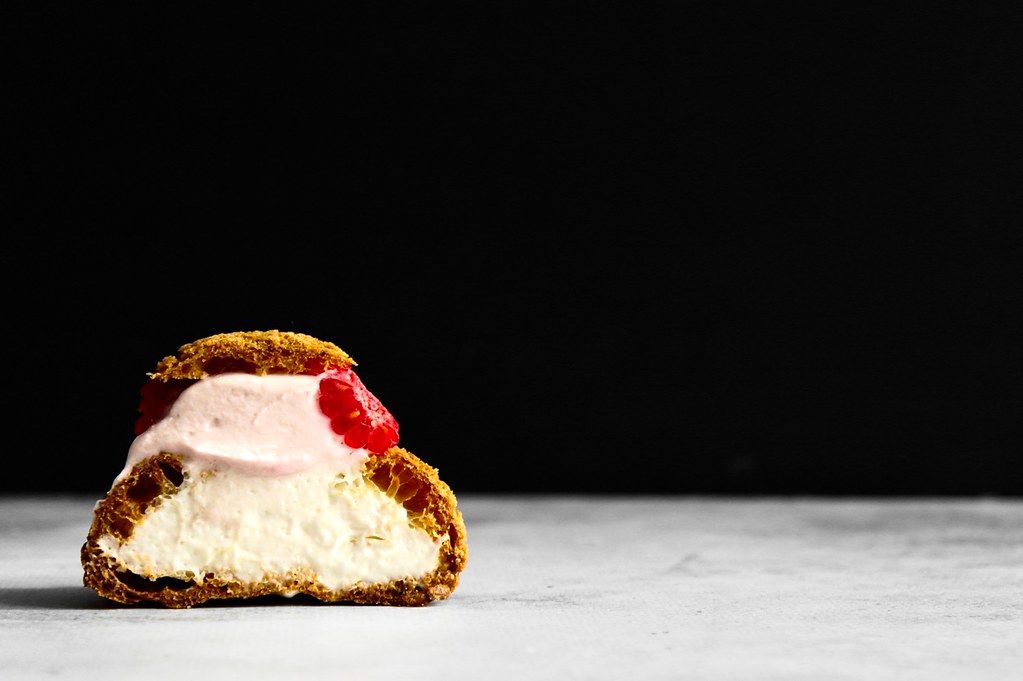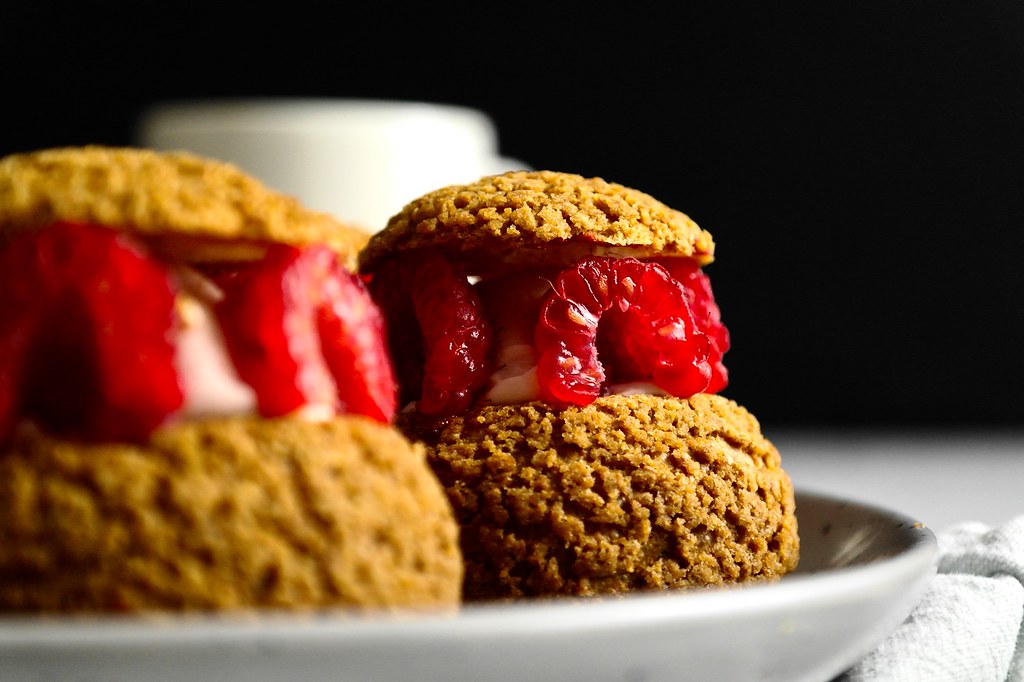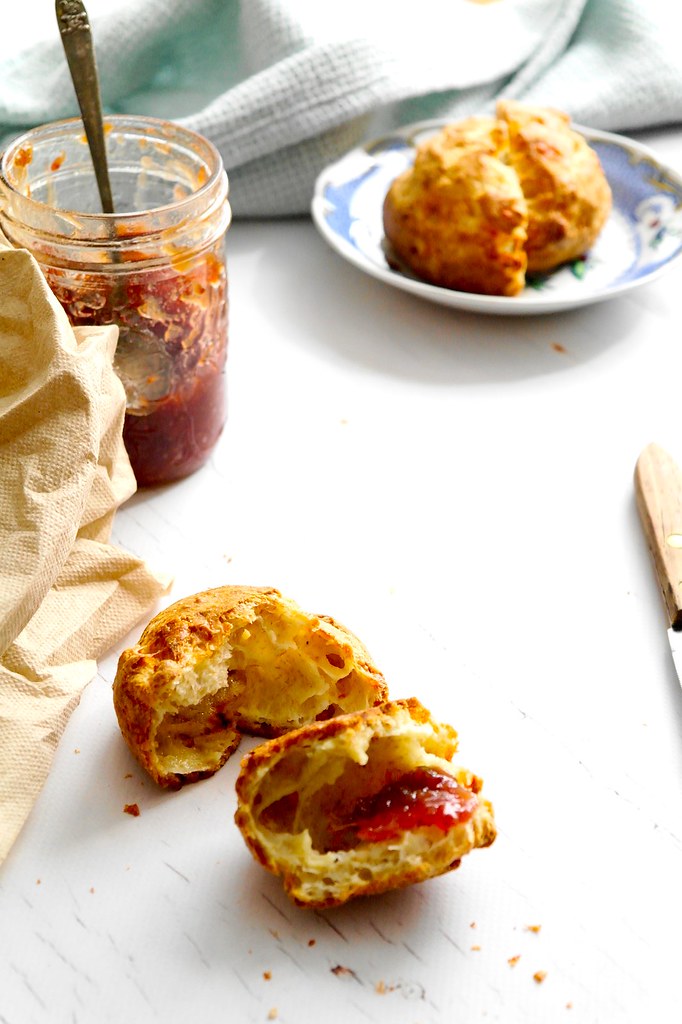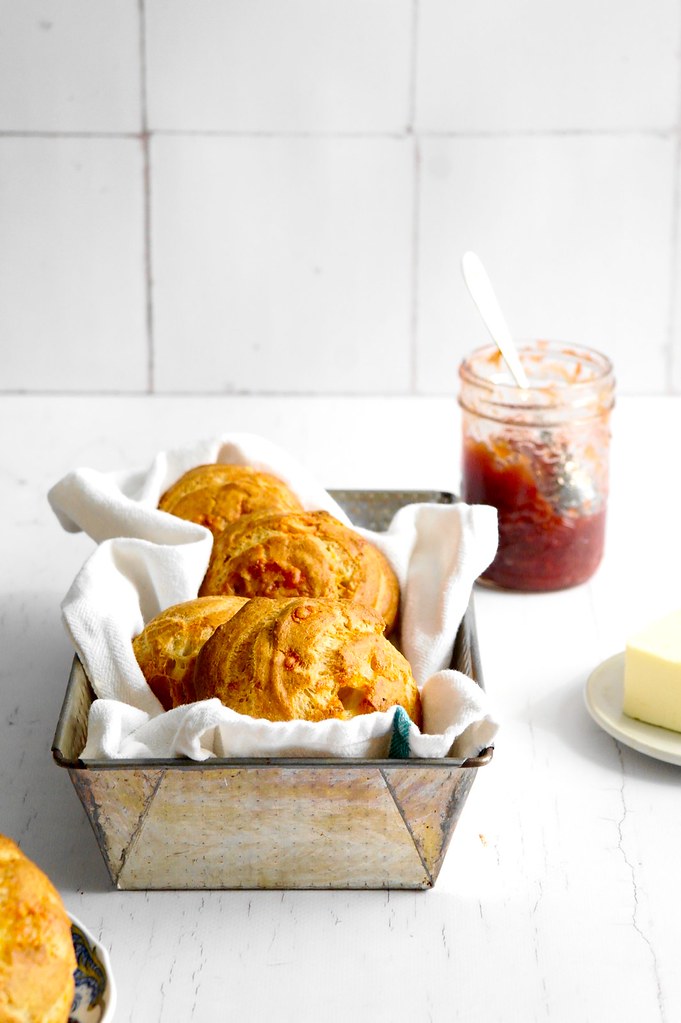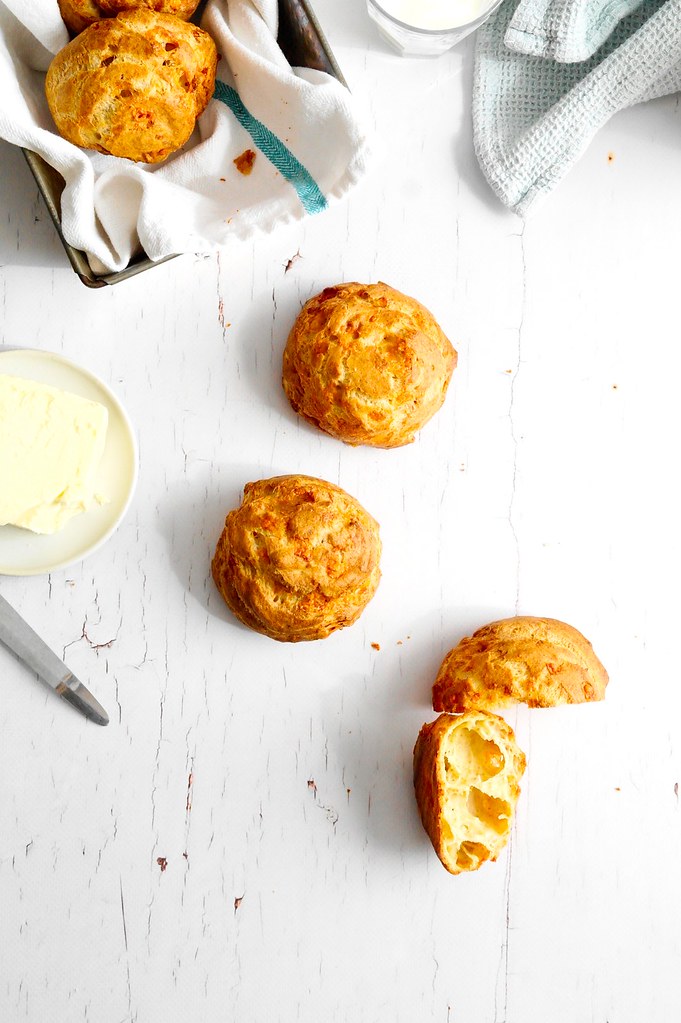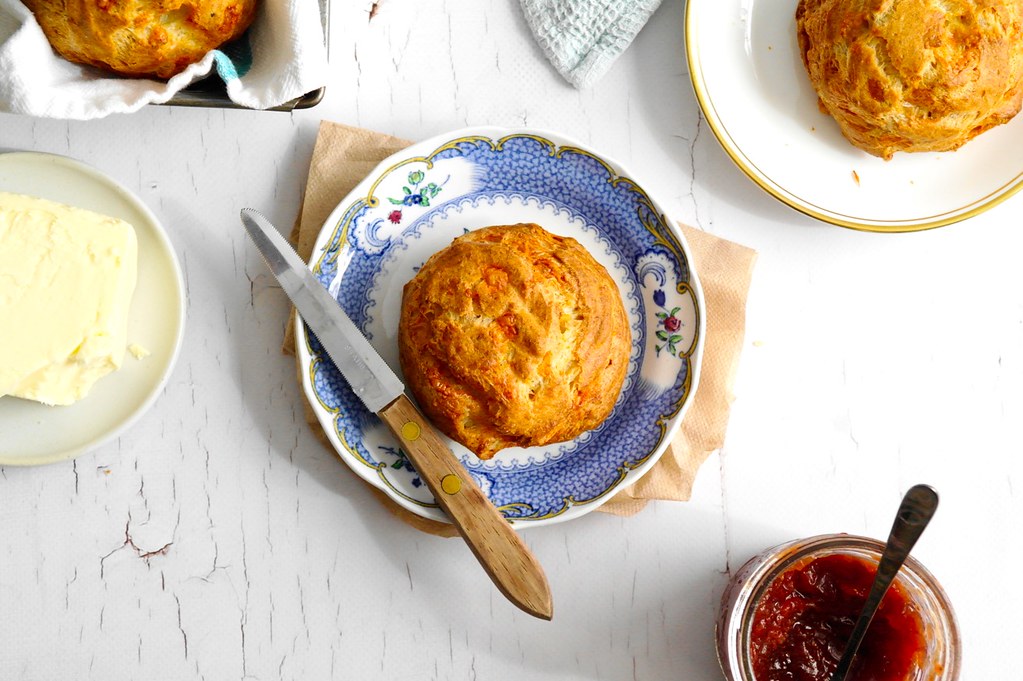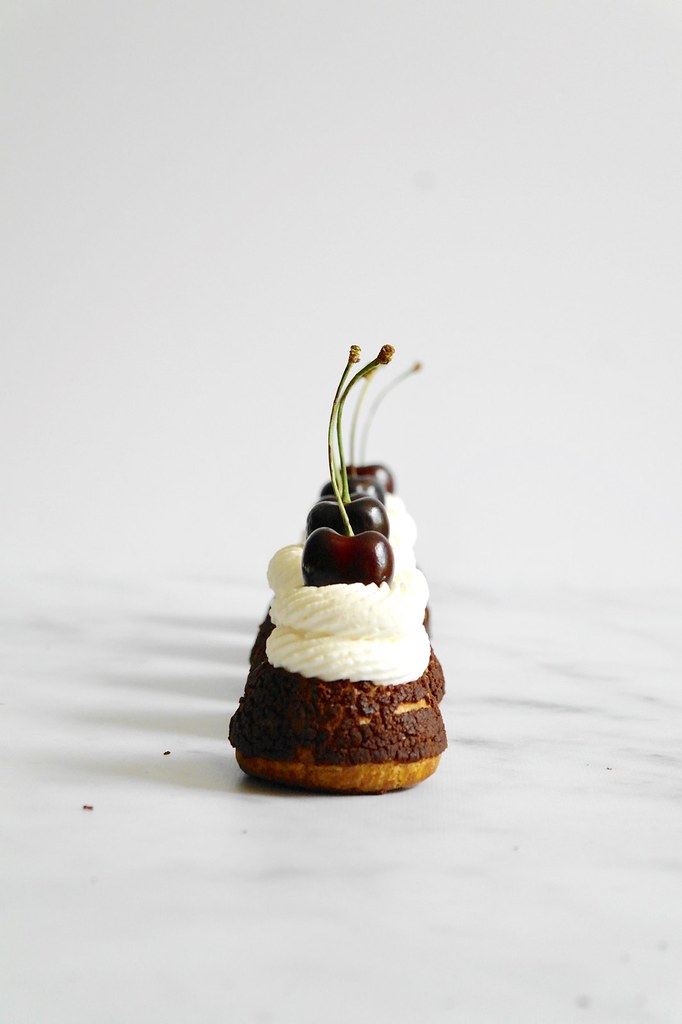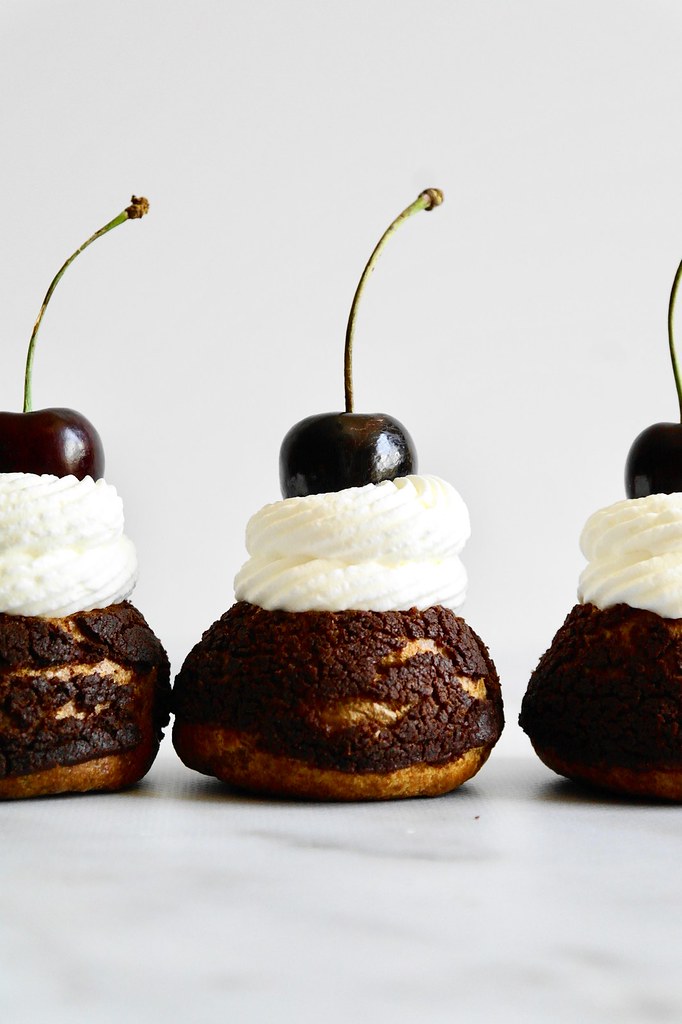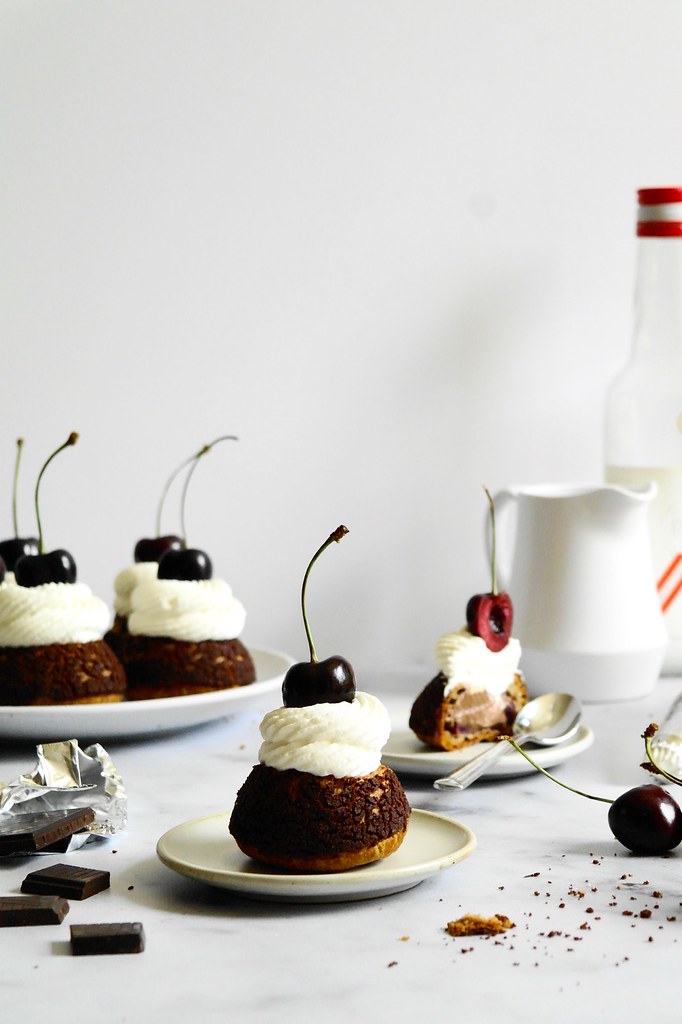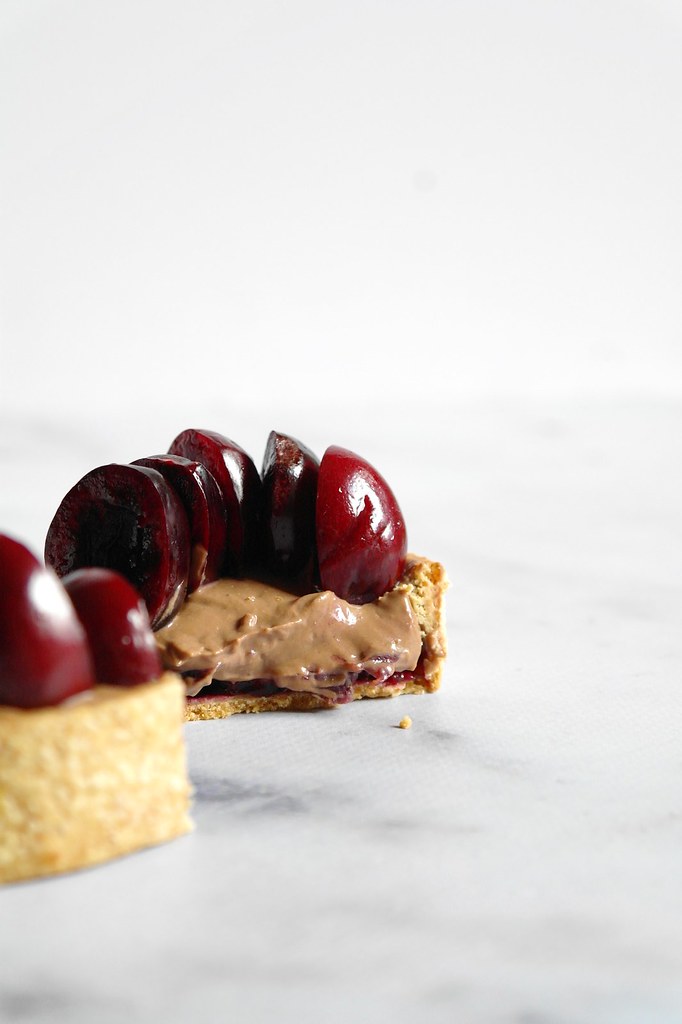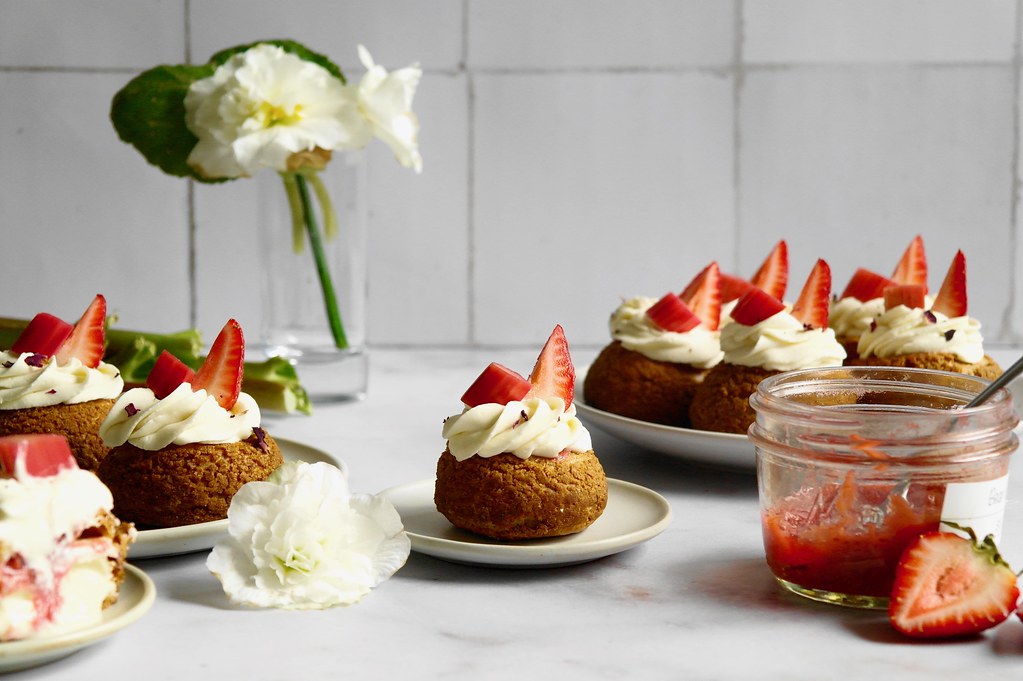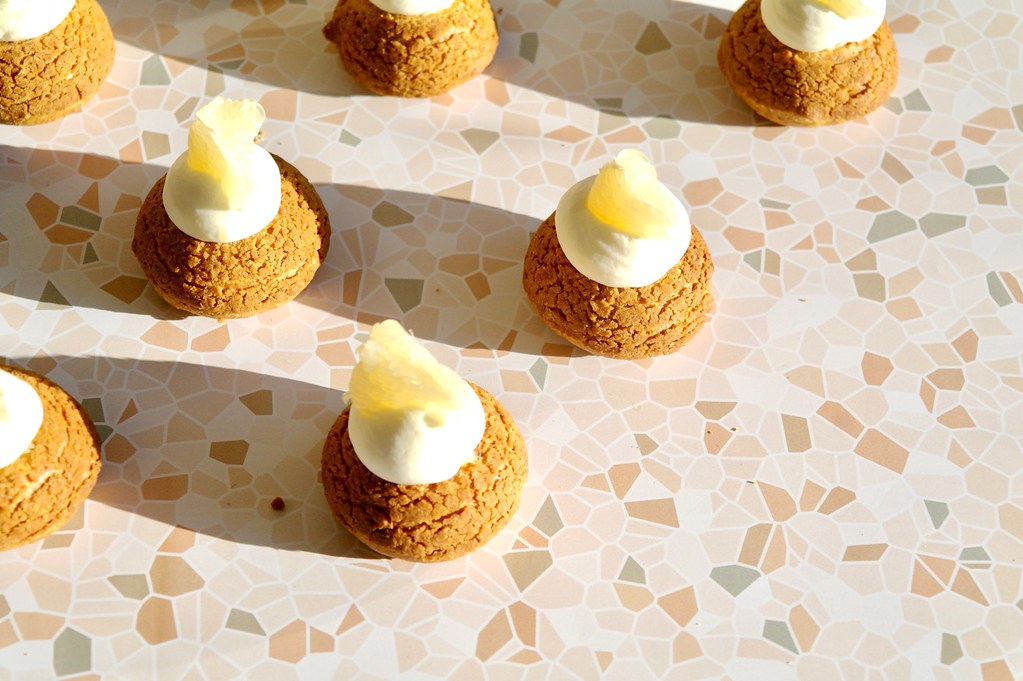
Okay, so slipping in one more holiday bake, because if I let myself wait another month it will be spring… Anyways, a choux wreath! I think the shape alone makes it feel festive, but to reinforce the theme I filled it with a pastry cream made with the flavours of ponche de crème, a Trinidadian and Tobagonian holiday drink similar to eggnog. Think nutmeg, cinnamon, and rum plus bright spots of lime and angostura bitters.
For more on the history of ponche de creme and other Christmas traditions, see this article from TasteTrinbago! And if you’re understandably not feeling a whole choux wreath, maybe just make ponche de crème instead… I referred to Trini Cooking with Natasha’s recipe for inspiration in making this dessert.
Perhaps wreath is a bit of generous term: all it is are cream puffs piped a bit too close together. It does makes it easy to break into smaller segments for serving!

ponche de crème choux wreath
Inspired by the eggnog chouette wreath from Giselle Courteau’s Duchess at Home. The original recipe has a ganache filling, but I’ve gone for a stabilized lightened pastry cream instead. Ponche de crème flavours inspired by Trini Cooking with Natasha.
choux pastry
- 43g butter
- 90g milk
- pinch kosher salt
- sprinkle of granulated sugar
- 45g whole wheat flour
- 1 ½ eggs (likely will not use all)
- pearl sugar
For the choux pastry, preheat the oven to 400F. Line a baking pan with a sheet of parchment paper. On the backside, draw a 13cm diameter circle. Then draw eight slightly overlapping 5cm circles in a ring over the larger circle. This will be the template for your choux ring (you can also absolutely freehand it too!).
Place the butter, milk, sugar and salt in a saucepan and bring to a boil. Add the flour and quickly mix in with a wooden spoon. Lower the heat and continue to cook the mixture until it forms a ball. Remove the pastry from the heat and let cool a bit before adding the egg.
Beat the egg in a small bowl. Add a bit at a time to the pastry. Assess the consistency of the dough after each addition of egg and stop once you’ve achieved the right consistency. I find it easiest to begin beating in the eggs with a wire whisk and then transition back to stirring with a wooden spoon once the batter loosens. The dough should be shiny, but not fluid (if its something a bit new to you, look up a video or a more detailed tutorial for the right consistency – such as looking for the “triangle” of dough!). Importantly, you don’t need to use all the egg (I usually don’t need it all) – or you may even need a bit more.
Transfer the pastry to a piping bag fitted with a medium (~1cm) round tip (I use Wilton 2A). Pipe mounds of pastry onto the 5cm circles. To make the size consistent, I position the piping bag a little ways above the pan (1-2cm or so – it will be quite natural!) and pipe until the mound of dough nearly fills out the circular guide drawn on the parchment. I avoid lifting the piping bag further up as I pipe – if you do that, you end up with a larger and taller mound of pastry and the size will not be as consistent. If you have extra choux pastry, either add it evenly to the puffs you’ve piped or pipe some extra ones beside the ring.
Using a finger dipped in water, flatten the peaks on each puff. Then brush the ring all over with a bit of extra beaten egg and sprinkle with pearl sugar.
Bake for 10 minutes at 400F, then decrease temperature to 375F and bake about 20-25 minutes more or until well browned. You can rotate the pastry after it has been in the oven for a total of 20-25 minutes or so, once there is no worries of it deflating. As soon as you can handle the pastry, cut a slit into the side of each puff to let steam escape.
ponche de crème diplomat
You can easily make this an eggnog flavoured cream by omitting the lime and angostura bitters. You’ll likely have about 1/2 cup extra cream or so.
- 240g whole milk
- 1 cinnamon stick
- finely grated zest of 1 small lime
- 1/8 tsp grated nutmeg
- 3 egg yolks
- 2 1/2 tbsp granulated sugar (or closer to 1/4 cup if you prefer sweeter desserts)
- 15g cornstarch
- 2 tbsp butter
- 1 tsp powdered gelatin bloomed in 1 tbsp water
- 2 1/2 tbsp rum, or to taste
- 3/4 tsp angostura bitters
- 120g heavy cream, whipped
Place the milk, cinnamon stick, lime zest and nutmeg in a small saucepan. Heat until steaming, then cover and set aside to infuse for 20-30 minutes.
Whisk together the egg yolks, sugar and cornstarch in a bowl. Reheat the milk until it begins to simmer and then remove from the heat and slowly drizzle into the egg yolk mixture, whisking constantly to temper the yolks.
Return the mixture to the saucepan and over medium-high to medium heat, continue to cook while whisking constantly. Look for the pastry cream to begin to thicken and bubbles to slowly rise to the surface (to see the bubbles, you’ll need to occasionally pause whisking briefly to check). Once the pastry cream has begun to bubble, continue to cook for 1 minute while whisking very vigorously to ensure that the starch is cooked through. Immediately transfer the pastry cream to a new bowl. Whisk in the butter and bloomed gelatin until both are melted into the hot pastry cream. Cover, let cool, then transfer to the fridge to chill and set completely, at least a couple hours or overnight. This is a good point to stop if you’re doing this step a day or two early, as you can finish up the cream the day you assemble.
Once set, use a loose whisk and a strong arm to beat the pastry cream until as smooth as you can get it (the cream gels so it will be quite lumpy at first). Whisk in the rum and angostura bitters. Whisk in a dollop of the whipped cream, then fold in the remainder. Transfer to a piping bag with a medium round opening.
assembly
Using a long and thin serrated knife, slice the choux ring in half about 1cm up. It’s okay if the top doesn’t stay together and separates into individual puffs. Pipe tall dollops of cream onto the bottom of the choux ring. Place the top back in place.









